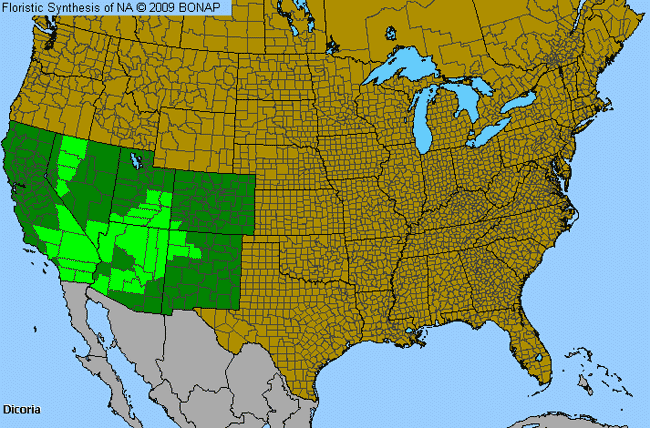Twinbugs (Dicoria)

Twinbugs Genus Details

Dicoria canescens is a spreading, annual herbaceous plant that is 1 to 3 feet tall. The ridged stem has leaves with coarse white hairs, long leaf stems that are longer on the lower portion, and more oval-shaped leaves on the upper region of the stem. Compound flower heads are located in several leafy, long flowering structures called panicles. Dicoria brandegei is similar in appearance and height but leaves are linear or oblong lance-shaped.
Twinbugs Allergy Info

These species are considered possible causes of pollinosis, but their overall importance has not been studied extensively. Members of the Asteraceae family can cause allergic reactions to some individuals. Dicoria is wind pollinated and this increases its exposure to allergic individuals.
Twinbugs Pollen Description

Pollen grains of Dicoria are oblate-spheroidal to prolate-spheroidal; the amb triangular and 3-4 colporate. The sexine is thick, tectate, and is covered with short spines.
Species in This Genus

Allergenicity Legend:
 Mild Allergen |
Mild Allergen |
 Moderate Allergen |
Moderate Allergen |
 Severe Allergen |
Severe Allergen |
 Allergy Test Available
Allergy Test Available
Twinbugs (Dicoria) is a genus of the ASTERACEAE family.
This genus includes the following allergenic species:
This genus includes the following allergenic species:













